News feed
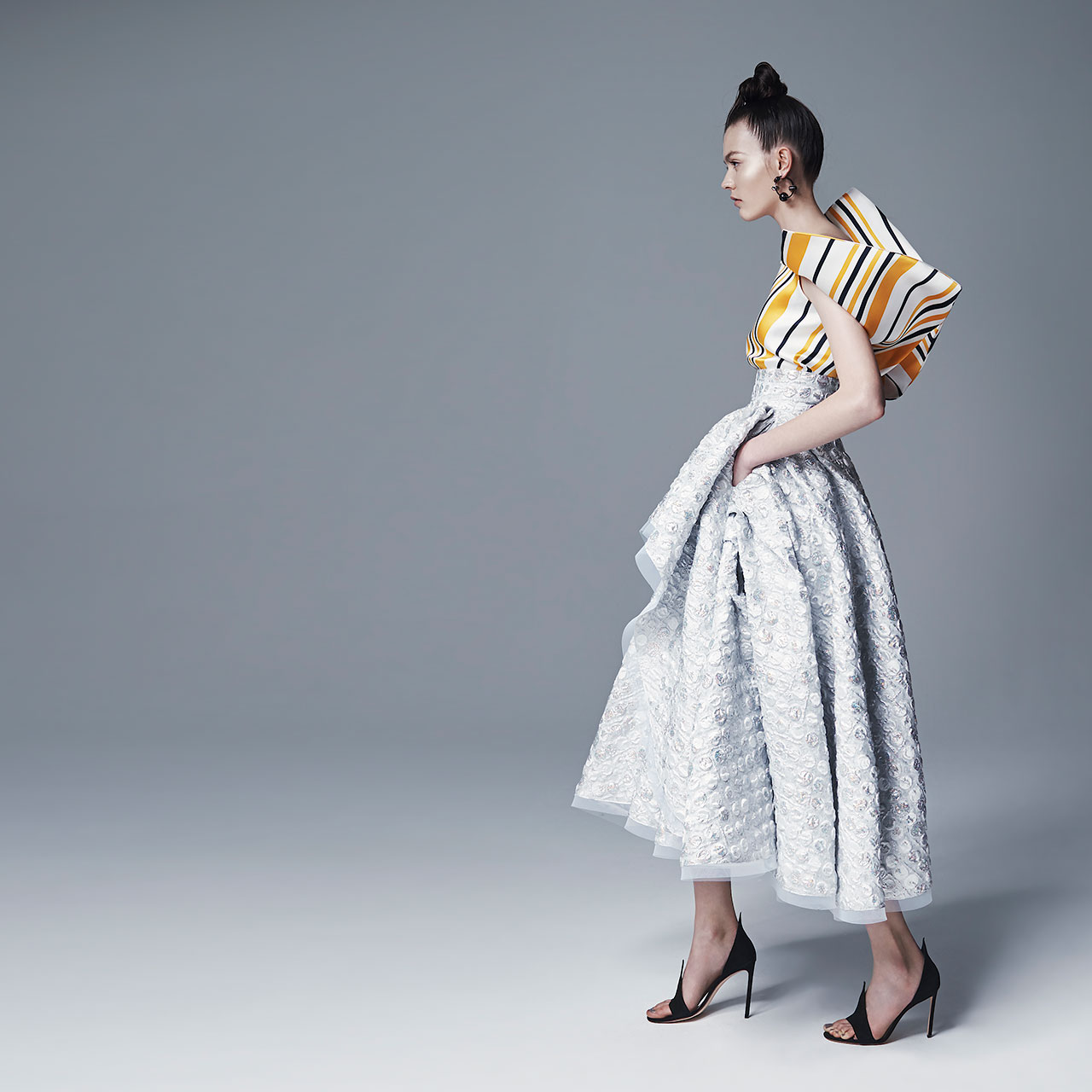
Silk and polyester skirt and top, Spring/Summer 2016
Credit: Jordan Graham
Amassed over the past two decades, Australian designer Toni Maticevksi’s incomparable body of work is the subject of a stunning new tome out this week written by prolific Australian journalist, editor, curator, author and gentleman, Mitchell Oakley Smith.
Maticevski: The Elegant Rebel distils twenty years of Maticevksi’s career into over 240 pages of images, illustrations and interviews exploring the designer’s oeuvre through the thematic concepts that bind his collections: ‘Sculpture and Drape’, ‘Texture’ and ‘Gothicism’ being three of many. One such theme synonymous with Maticevski’s design signature is ‘Volume and Proportion’, which he uses to spectacular effect in the creation of couture garments with a techno twist – many of which will appear in Dark Wonderland, a forthcoming retrospective exhibition to be staged at Bendigo Art Gallery from August 13. Herewith, an exclusive extract from The Elegant Rebel explores Maticevski’s love for turning up the volume and playing with haute couture proportions in the age of bodycon.
Given contemporary society’s predilection with the beautiful body – and, perhaps more specifically, the eternal quest for a slim figure inspired by the rise in the early-millennium post-supermodel era of the androgynous waif – fabric volume has, for the most part, disappeared from modern fashion. Certainly, oversized garments are still very much present in collections of fashion designers, but for the past decade, the term ‘bodycon’ has been a mainstay in the contemporary lexicon, so omnipresent are skin-tight dresses and garments that showcase every minute detail of the body they envelop. In contrast to this enduring trend for slim-fitted garments, Maticevski has, since his earliest collections, explored notions of volume and proportion. Eschewing traditional pattern-cutting and instead working directly with the body or mannequin, the designer has embraced the use of additional lengths of fabric, and fabrics that lend themselves to voluminous proportions, providing a counterpoint to the prevailing slim silhouette and differentiating his work in a crowded marketplace.
Maticevski certainly isn’t the first designer to experiment with volume as a way of thwarting the traditional female silhouette. To the delight of women in post-war Paris in 1947, Christian Dior’s ‘New Look’ was characterised by a cinched waist and full skirt, and heralded a return to femininity and glamour following years spent in more masculine garments. Spanish-born, Paris-based couturier Cristobal Balenciaga then introduced another, similarly popular look, but instead focused on different areas of the body by broadening the shoulders and removing the emphasis on the waist. Best described as the tonneau, or barrel line, Balenciaga’s new silhouette comprised volume around the waist, in stark contrast to Dior’s cinched waist. Instead, he slimmed the hem, creating a shape that fitted to the woman’s top and bottom, but showcased a voluminous billowing of fabric at the back – a luxury following years of war rationing. Rei Kawakabo, the avant-garde designer behind Japanese label Comme des Garçons, has further experimented with volume in a contemporary setting, thwarting traditional notions of the petite female form in favour of something altogether more innovative.
The legacy of these two great figures of mid-century haute couture are important to note, as the curvature and cocoon-like shape of many of Maticevski’s designs have, throughout his career, been likened to the two masters of French couture. But in doing so, it also speaks to the designer’s ability to adopt more traditional shapes and contextualise them for a modern audience. ‘We associate things like elegance and beauty with Toni’s work, but that sounds banal in a way, and doesn’t do it justice, because what he manages to do is to bring something really modern to it,’ says Glynis Traill-Nash, the fashion editor of The Australian. ‘His reimagining of a mid-century silhouette in fabrications like those used for sportswear breathes a sort of freshness into something that could be stiff. Instead, it becomes something extraordinary. So while you [will] be wearing a dress with a very 1950s silhouette to it, a big skirt perhaps, you don’t feel overdone.’

Credit: Supplied
‘My clothing has always had a classical silhouette, or been based on a traditional idea, but creating those looks in different fabrics gives them a new feeling, and it triggers my thinking outside of the standard formula. It’s about questioning how I make garments in the vein of what I’ve always done, but in a way that’s challenging, even for myself.’
Toni Maticevski
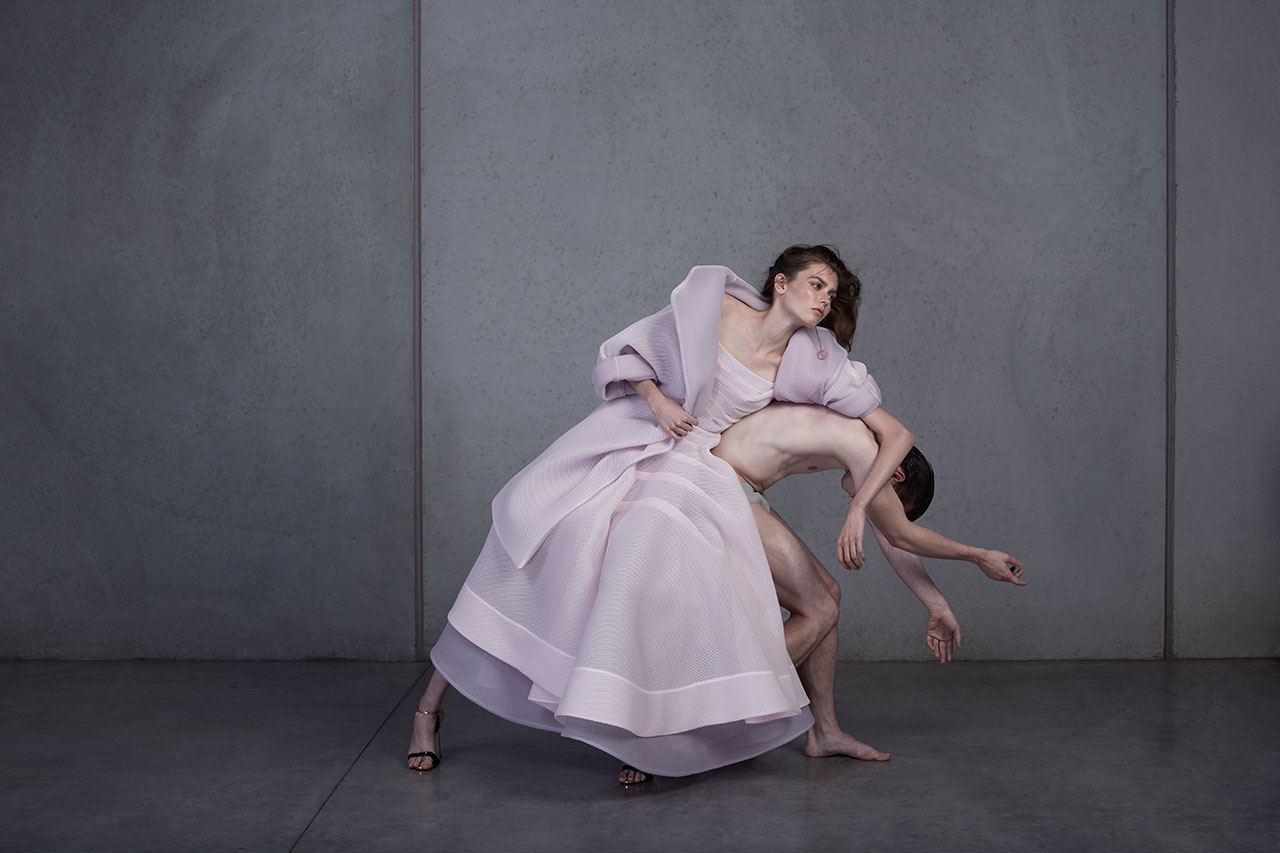
Polyester gown and overcoat, Resort 2015
Credit: Jordan Graham
‘Maticevski occupies a rare niche in that his designs are incredibly glamorous yet not old-fashioned. Instead, they are relentlessly modern in the use of high-tech fabrics, which are not associated with haute couture but instead with modern life. You can see that the women that wear his clothes zip up and head out to have a great time. I love that you can wear a Maticevski ball gown with runners.’
Marion Hume, international fashion editor, Australian Financial Review
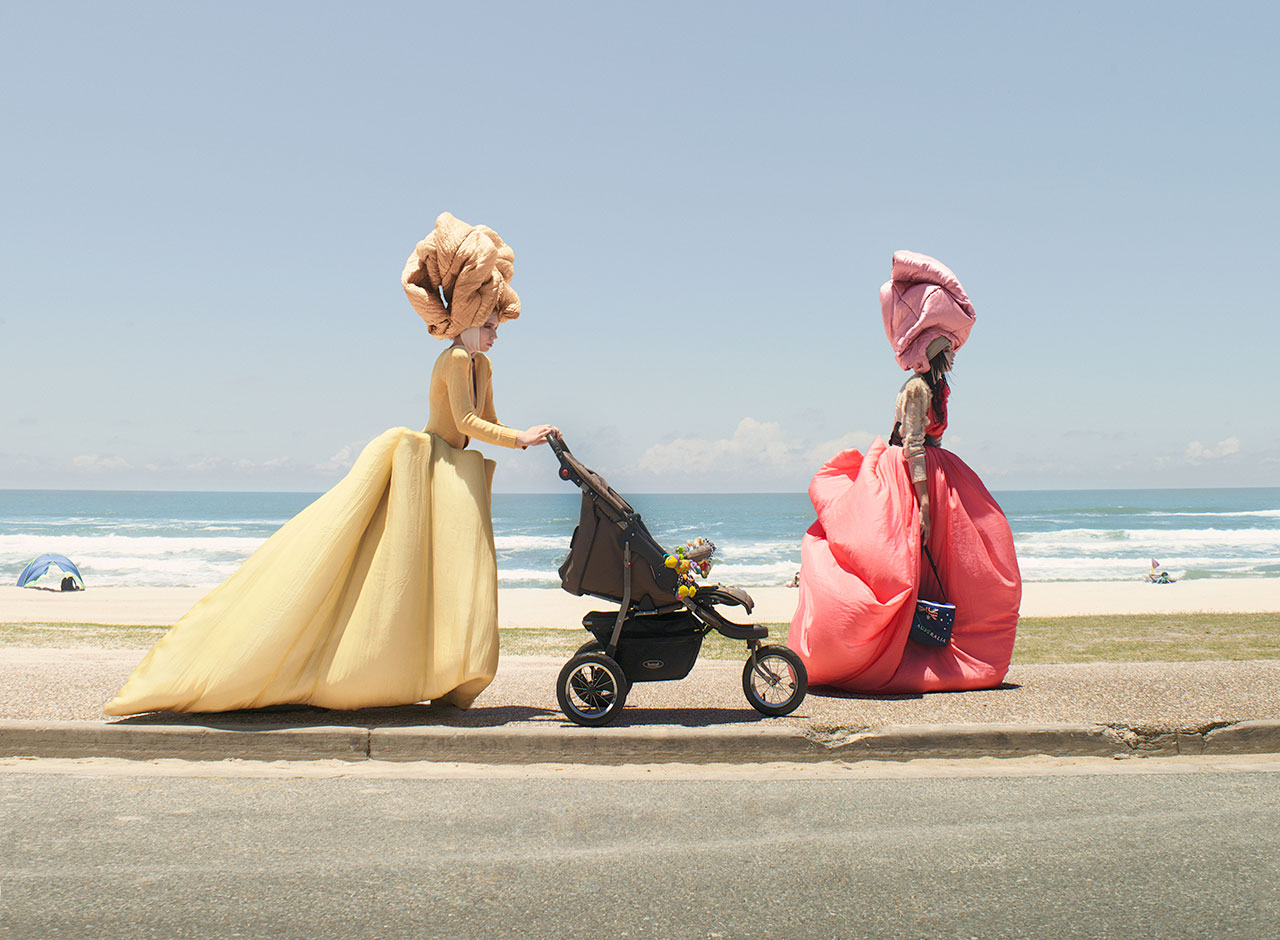
Silk cotton voile and triacetate gowns, Fall/Winter 2007
Credit: Georges Antoni
As part of the fall/winter 2007 collection, his second shown as part of New York Fashion Week through a fashion incubator initiative set up by IMG and UPS at Bryant Park, Maticevski showed a triptych of what were later dubbed ‘doona’ dresses. Crafted from foam-lined silk cotton voile and triacetate, the voluminous gowns were inspired by the iconic Golden Age of Hollywood, taking the bias cut drapery reminiscent of the period, which was designed to highlight a feminine shape, to their extreme in pastel brights. ‘I have been working on pretty, floaty, feminine for so long,’ Maticevski said at the time. ‘I thought fuck it, I’m just going to show weird shit,’ he remarked, demonstrating his trademark wit and desire to thwart his own status quo.
As Women’s Wear Daily correspondent Patty Huntington wrote of the gowns: ‘The show’s “wow” element … will no doubt be snapped up for editorial spreads. Whether he sells any is irrelevant.’ And, certainly, the garments were divisive. While the dresses later appeared in spreads by the likes of independent titles Oyster and Dazed & Confused, and on the cover of the book Fashion: Australian & New Zealand Designers, the reviewer from Style.com compared the garments to the chameleonic stylings of fellow Australian, performance artist Leigh Bowery. Nonetheless, these pieces formed an important foundation for Maticevski’s ongoing design practice, in which the boundaries of traditional fit and form are consistently challenged so as to evoke an emotional response. ‘You either love them or you hate them,’ Maticevski said.

Polyester gown and overcoat, Spring/Summer 2015
Credit: Simon Upton
‘He captures the spirit of 1950s Balenciaga but with such a contemporary spirit that is both fundamentally wearable and aspirational. His collections fuse drama without being overpowering, paying tribute to the female form in the way that only he understands cutting and drape at such a highly evolved level.’
Associate Professor Karen Webster, deputy head of fashion and textiles, RMIT University

Silk and polyester gown and overcoat with nylon tulle underlay, Fall/Winter 2015
Credit: Zachary Handley
‘When I first showed this collection, every woman I spoke to said that no-one loves volume on her hips, and it proved to be the complete opposite. It was used in a way to accentuate the body to [make it] look leaner and longer, and the collection ended up being one of the most successful.’
Toni Maticevski
While body-con silhouettes have largely dominated 21st century womenswear, particularly in Australia, Maticevski has long favoured more voluminous garments. While his dresses feel modern because of their innovative fabrics and detailing, their shapes find their genesis in more historical dress, such as the silhouette favoured by Marie Antoinette in 18th century France – a nipped-in waist and fulsome skirt – and which was later appropriated by Christian Dior in his famed New Look. That a Maticevski dress offers a woman coverage in the places she typically seeks and accentuates her features speaks to his ongoing popularity.
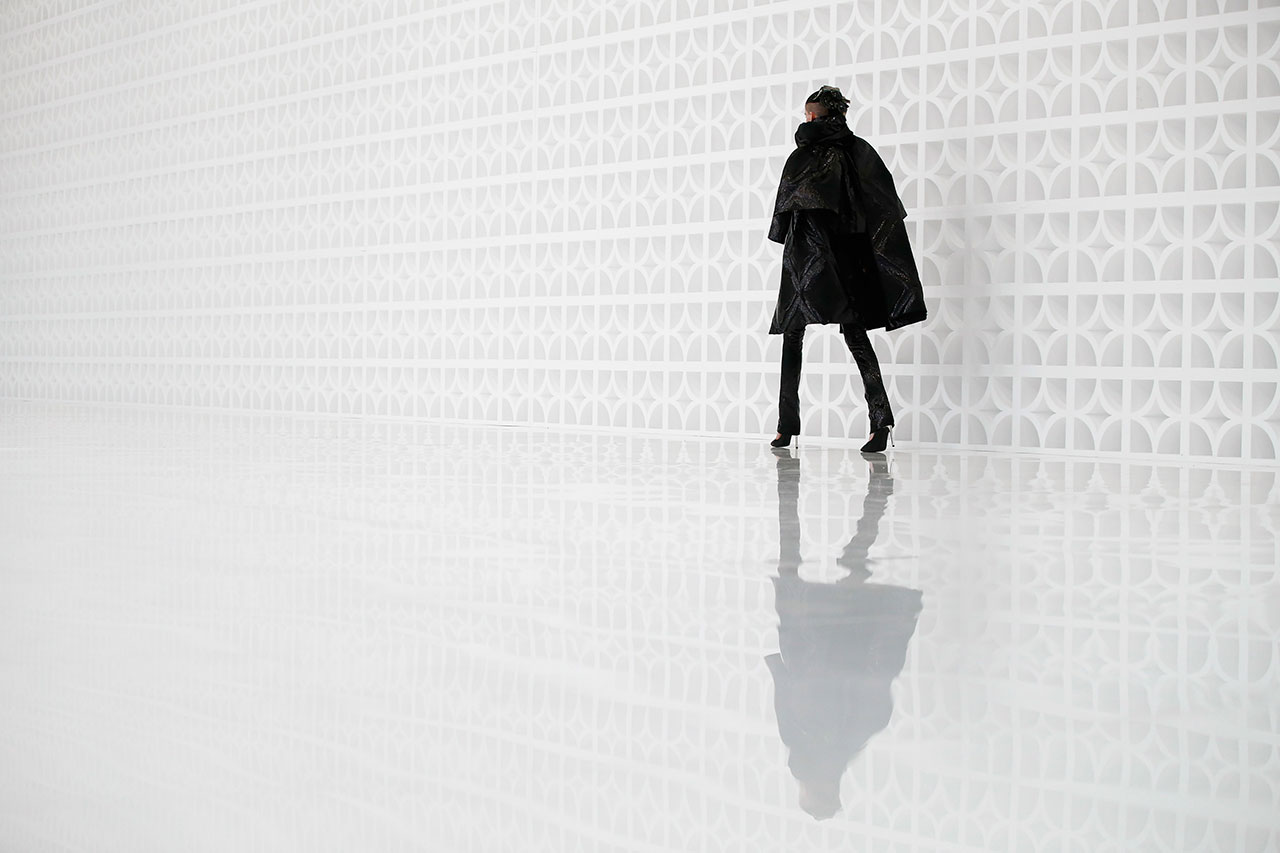
Silk and polyester overcoat and trousers, Fall/Winter 2015, pictured on the runway at Australian Fashion Week
Credit: Lucas Dawson
In his spring/summer 2014 collection, shown as part of Australian Fashion Week in Sydney, Maticevski presented a series of dresses, skirts and gowns that followed the line of classical mid-century silhouettes – cinched waists, full skirts – but rendered them in bonded neoprene, a democratic fabric best associated with wetsuits and, more recently, athletic sportswear. In some instances, these garments were paired with cropped, racer-back tops, further adding to that melting pot of high and low cultural references. In doing so, Maticevski reached a turning point in the history of his namesake business with this collection, taking the elegance for which he was already well regarded and imbuing it with a youthful spirit, attracting the attention of a broader audience.
Extract taken from Maticevski: The Elegant Rebel by Mitchell Oakley Smith with foreword by Kirstie Clements, published by Thames & Hudson Australia, and available from all good book sellers, online and in fashion boutiques.
Signed copies are available online here.

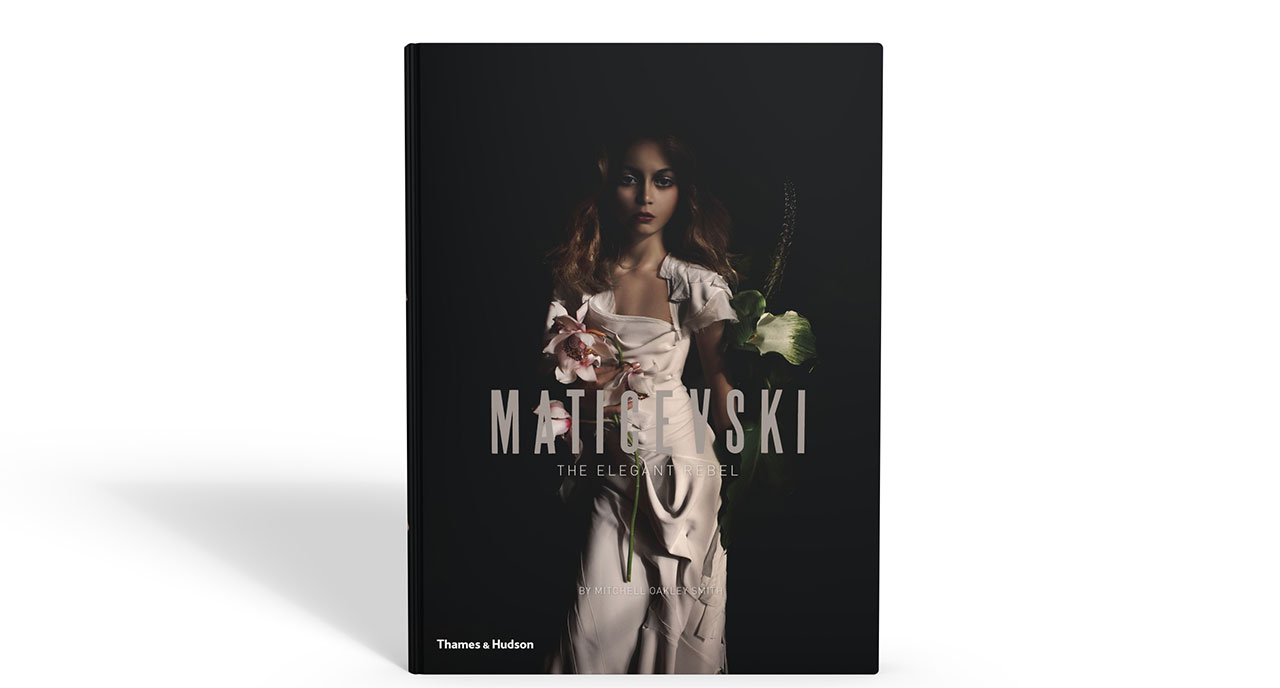
Credit: Supplied
Tile and cover image: Georges Antoni










